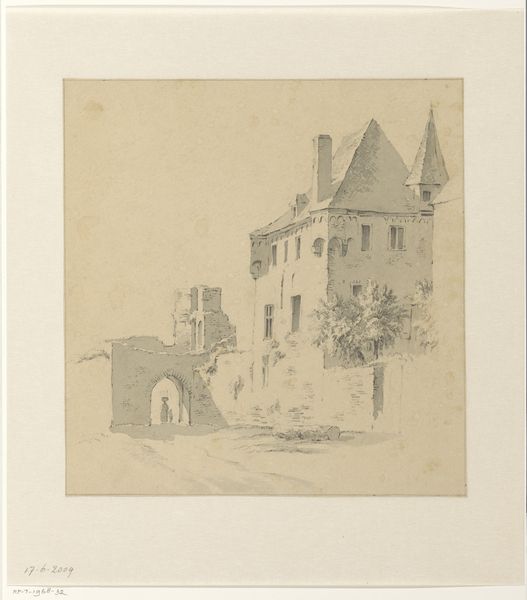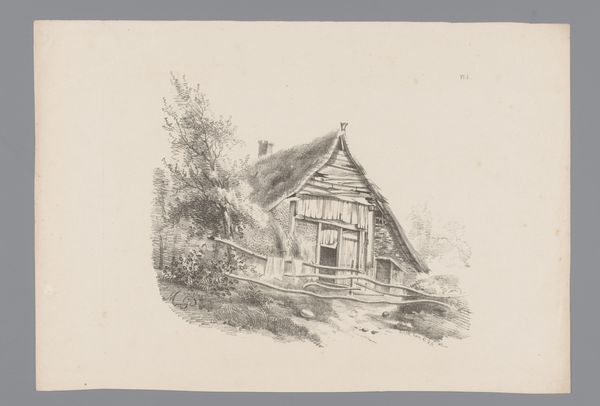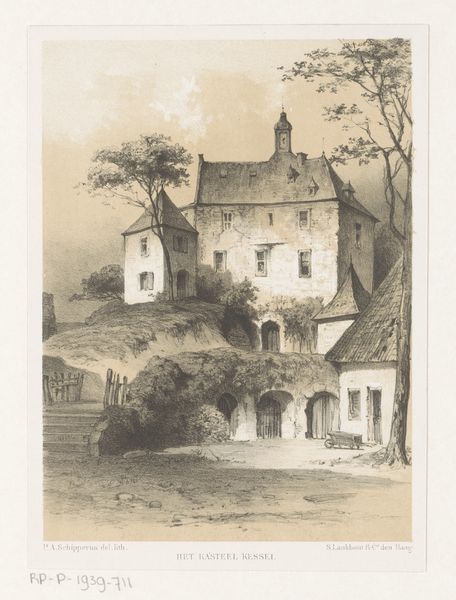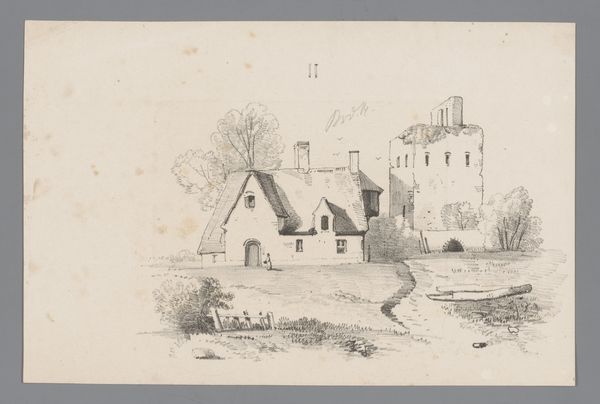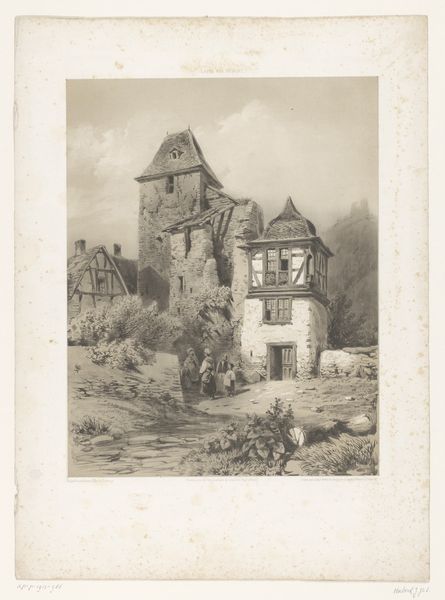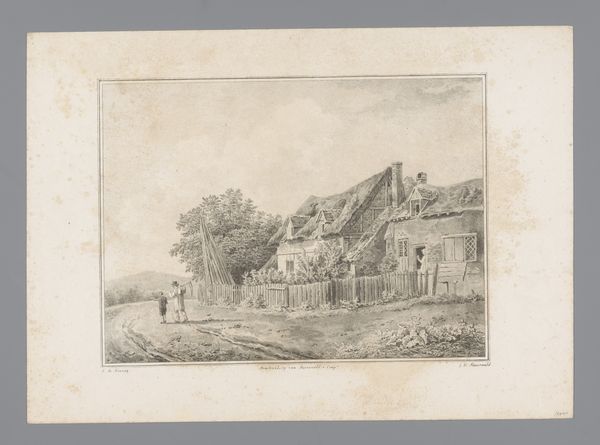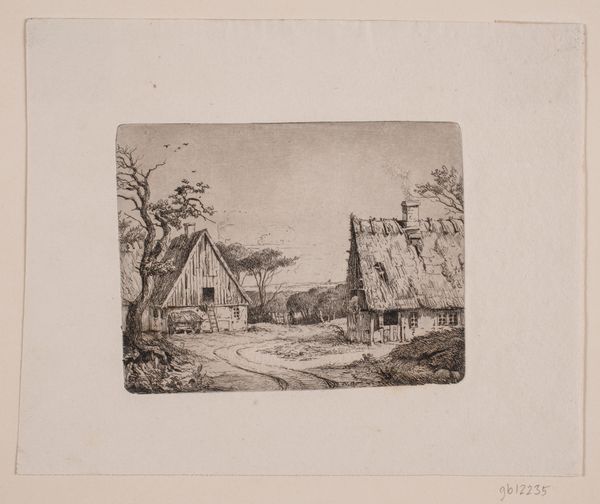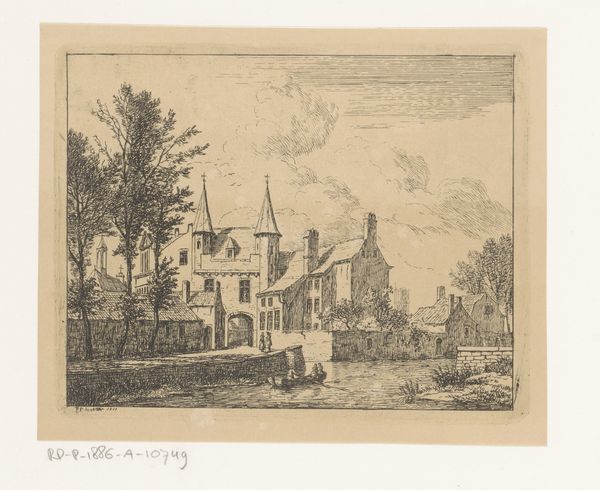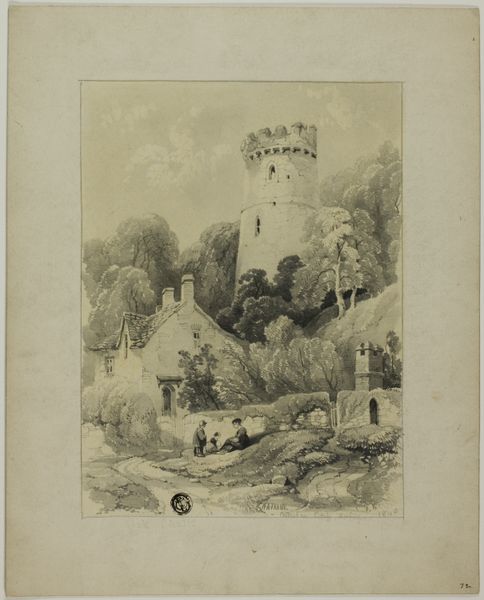
drawing, pencil
#
drawing
#
landscape
#
pencil
#
realism
Dimensions: height 266 mm, width 350 mm
Copyright: Rijks Museum: Open Domain
Curator: "Gezicht op een landhuis te Elsene," or "View of a Country House at Ixelles," a pencil drawing made between 1838 and 1839 by Paulus Lauters. It's currently held here at the Rijksmuseum. Editor: Instantly, it strikes me as having this kind of whimsical, storybook quality. The rendering is so precise, but there's an undeniable air of quaintness to the architecture. Curator: It really captures a specific time, doesn’t it? Lauters was working in the midst of artistic shifts in Belgium. He moved from more historical paintings to a growing Realism that embraced close observations of the local landscapes, similar to what the Barbizon School was exploring. Editor: I appreciate the intimacy offered by the medium, how a simple pencil can deliver such detail. The choice to depict this country house…was this a subversive decision, or a romantic retreat to an antiquated aristocratic idea? Curator: The line is a little blurred here, honestly. In that era, there was increasing social scrutiny against landed wealth, with some country estates holding a grim history of exploiting peasant farmers. It makes me think whether Lauters tried to engage the audience into critically thinking of property rights or idealising a nostalgic era that ignores colonial implications? Or was it merely trying to embrace a universal charm and retreat from societal issues by exploring pastoral escapism and promoting its aesthetic beauty? Editor: The details, like the woman seemingly carrying something in the yard, invite closer inspection, almost asking us to reflect on their labor in juxtaposition with the home’s inhabitants. Does her presence implicitly criticize an outdated social and labour class? Curator: That's a reading that definitely adds depth to an image that, at first glance, might seem simply decorative. Lauters gives us enough detail for our minds to build stories. Editor: Precisely. Art that compels viewers to question the relationship between the artist, the subject, and the era is timeless. Curator: I agree. It becomes much more than just lines on paper; it evolves into a record of questioning.
Comments
No comments
Be the first to comment and join the conversation on the ultimate creative platform.
